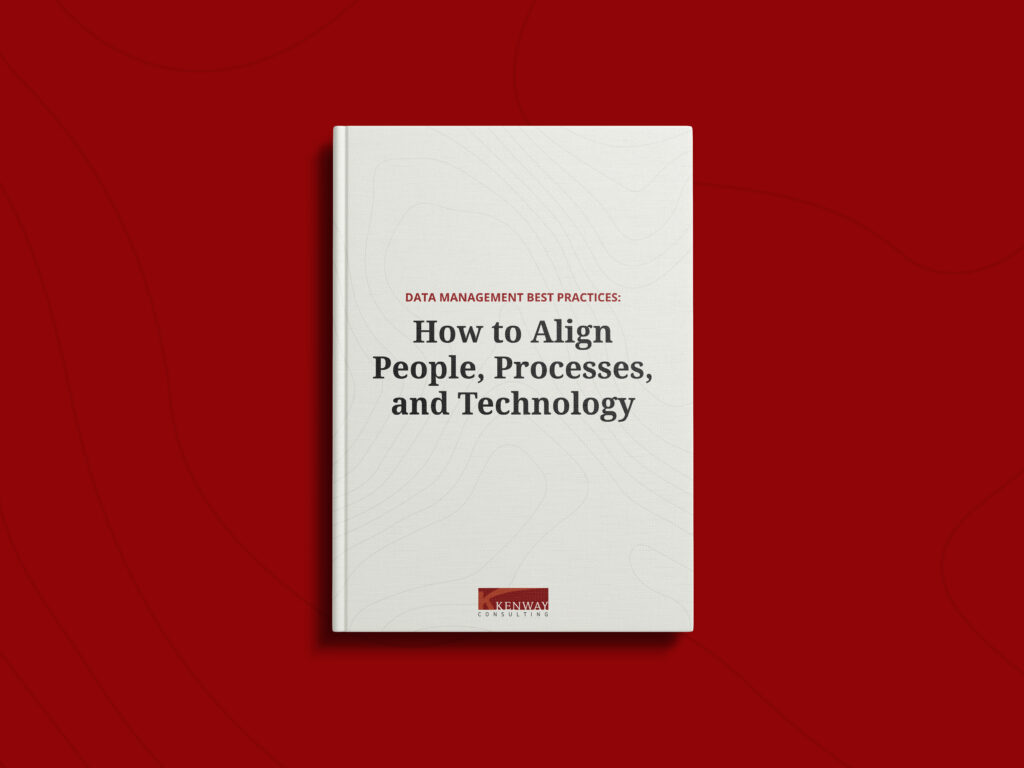Data Management Best Practices: Downloadable Guide

By carefully considering your people, processes, and technology as you plan for data management, you can avoid common challenges and ensure the success of your data project. This guide will walk you through questions and considerations you need to have a strong, foundational understanding of to ensure the right data management best practices are adopted.
Download the guide to learn:
- Why enterprise data management is essential to realizing your organizational goals
- Three steps you must take before establishing your data management plan
- Key considerations for developing your data management plan: people, processes, and technology

Kenway’s Approach to Data Management
Odds are, you’ve got big plans for your data. Maybe you’re planning to create self-service tools for your customers. Maybe you’re migrating from legacy on-premise systems to the cloud. Maybe you’re undergoing a complete overhaul to your data strategy.
Whatever your project, how you govern and manage your data is critical to meeting your goals. Effective data management and governance should be approached holistically, and every organization needs to consider three critical factors as they plan: people, processes, and technology.
With a holistic approach, you can identify the data management best practices that align with your data goals and expected outcomes. These practices will help ensure that data is accessible and useful for the right people at the right time.
For many organizations, poor accessibility and usability prevent users from maximizing their data. For example, if sales teams can’t get a 360-degree view of the customer, they can’t personalize their messaging. Or, when managers can’t access data on their team’s performance, they can’t build reports and dashboards for senior leaders to help make confident, data-driven decisions. But with a data management plan built around people, processes, and technology, you can ensure that you collect, organize, process, and maintain data in a way that meets their needs while achieving company goals.
Rethink your Approach to Data Management
For many organizations, implementing the foundational elements of data management is a common sticking point. Without considering people, processes and technology, it’s possible to misalign your plans with reality. You may make decisions about processes that don’t work with your organizational culture or you may choose technologies that don’t align with the skills of your people.
This misalignment leads to silos, errors and incompleteness, inaccessibility, and overload. Even when your organization has the best intentions of avoiding these hurdles, technical, cultural, and resource limitations can get in the way. This guide will help you rethink your approach so you can understand your company’s current limitations and implement a practical, yet effective, plan for data management.
Data Management FAQs
What are the benefits of having a data management strategy?
A data management strategy enables you to align people, processes, and technology to reach your data goals. This alignment benefits your business in several ways:
- Manage data more efficiently, which reduces costs.
- Improve the reliability and accessibility of your data.
- Make decisions based on accurate information.
- Share and distribute data more easily, both internally and externally.
What are best practices for data management?
Data management best practices vary based on your data goals and capabilities. However, there are some high-level best practices that apply in all situations:
- Implement naming and cataloging conventions.
- Document data management practices as well as any data-related projects.
- Incorporate metadata to ensure data is discoverable.
What is the main objective of data management?
The main objective of data management is to ensure that data is accessible, accurate, and usable to achieve data goals.
Related INSIGHTS
How Can We Help?
REQUEST A CONSULTATION






